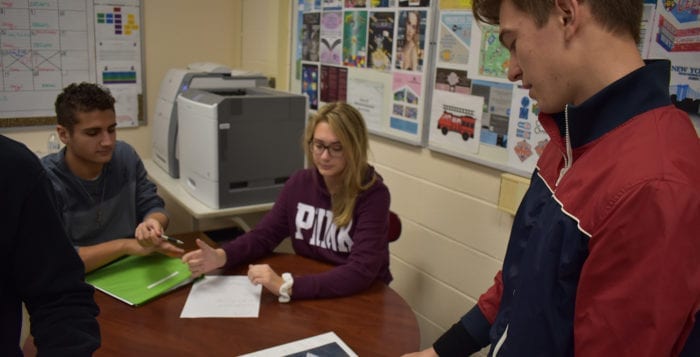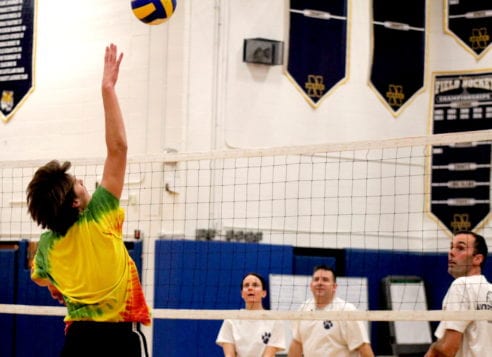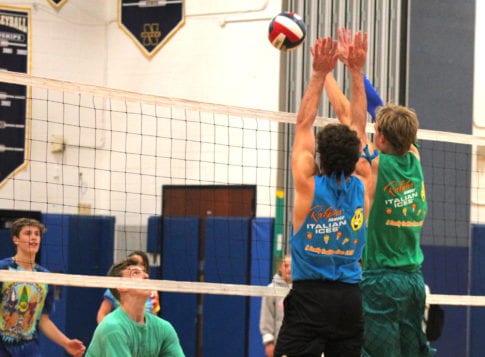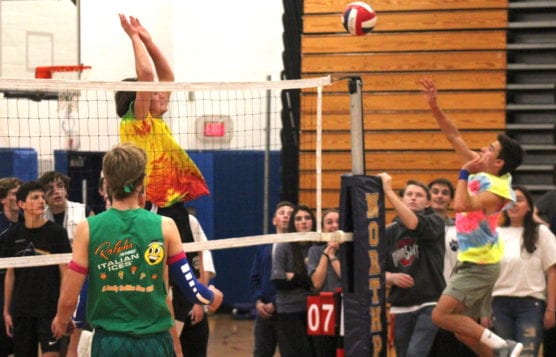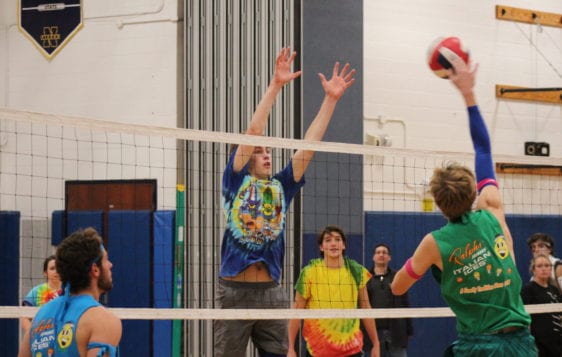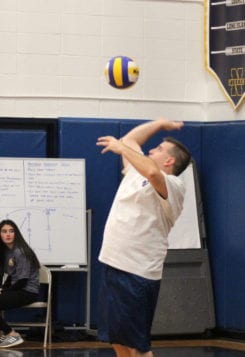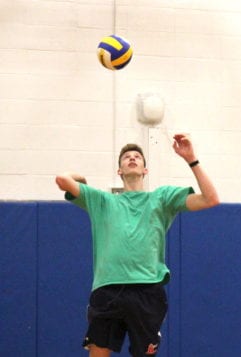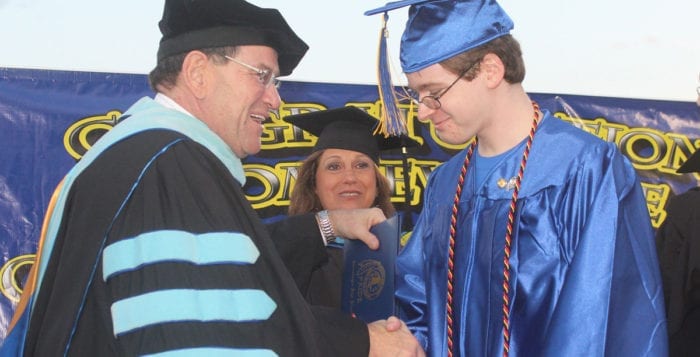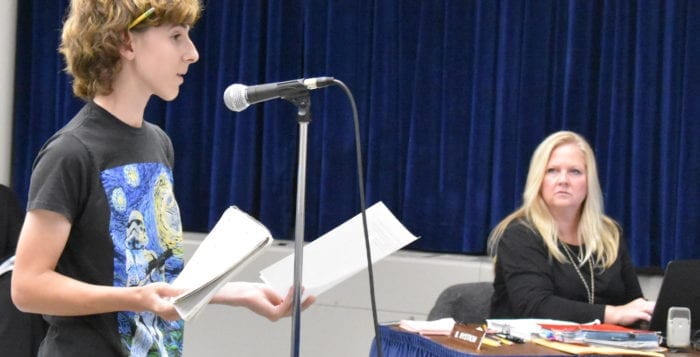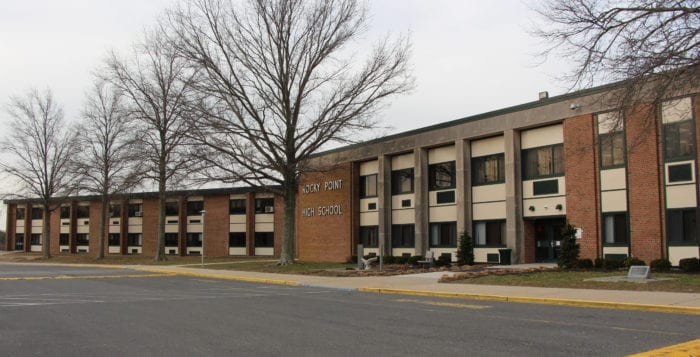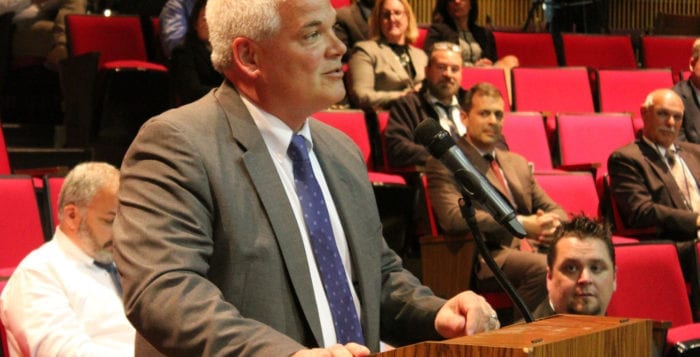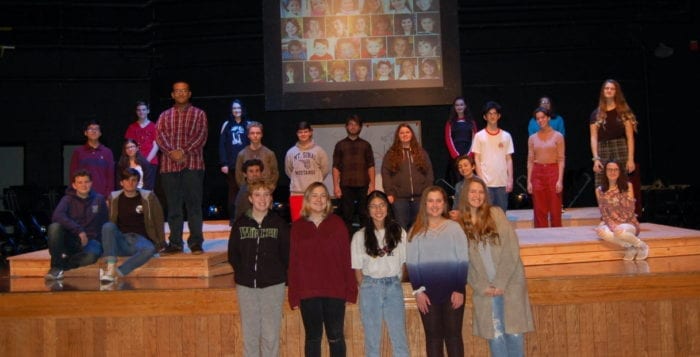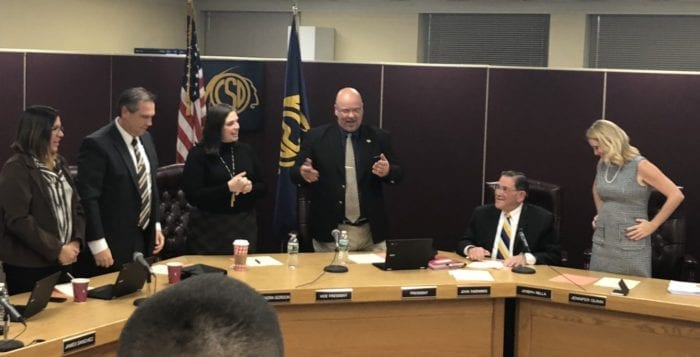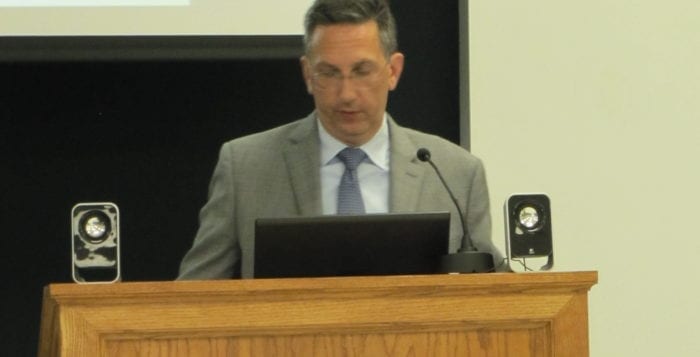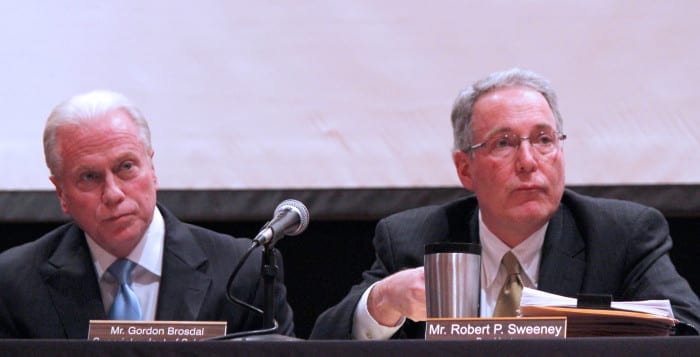The halls of the Miller Place High School are dead quiet, and footsteps echo far down the long halls. All the students are sitting down and being lectured to from one period to the next, all except one class where their raucous noise can be heard through the door.
Walking into business teacher Thomas Fank’s fourth-period Virtual Enterprise class is like walking into the main floor of a Manhattan business startup. There is an onrush of sound, a cacophony of fingers clacking on keyboards and students shouting across the short space of the computer room. As a stranger walks in, Miller Place High School student Andrew Friedman strides over with a hand outstretched. He doesn’t say, “Welcome to Miller Place” or “Welcome to Fank’s fourth-period.” He says, “Welcome to Amplify Audio,” the name of their virtual company that sells headphones and other audio equipment.

“Everyone here enjoys what they’re doing so they don’t go off topic much at all,” said Friedman, the president and CEO of their virtual company. “I look forward to this class every day.”
The business had only gotten off the ground at the beginning of October. Despite having only a 40-minute period every day, the students already have a portfolio as thick as a phone book, with sheet upon sheet of statements of goals, human resources forms, invoices and so on. The class has a living breathing website including a Spotify music playlist, a link to the virtual company’s Instagram account and a page where one can buy their products. Though the site and company are still under construction, just like a real business, Amplify Audio buys from wholesalers and then sells items for a profit, though all with virtual funds.
The business started with $150,000 in virtual investments from the renowned McNulty’s Ice Cream Parlor in Miller Place, the agrochemical company the Halex Group and Autonomous Ballistics, a Manhattan-based firearms company. All these investments were made with calls by the students themselves, and though they don’t involve actual dollars, the sales pitches are very real.
“If we didn’t have those investors, we would have had to take out a loan and we would have been in debt before we even started,” said Tyler Cohen, vice president and CEO of Amplify Audio. “This is one of the issues that a real company deals with. Where are they going to get the money?”
Virtual Enterprise classes have been becoming more and more popular in schools throughout the U.S., though Fank’s two VE classes have only been in place since the start of the school year. The business teacher said when he originally proposed the class to the school board, he expected it to be a much harder sell, but nearly everyone was on board with the idea.
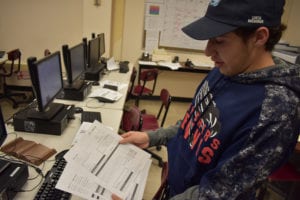
“It’s student driven, and that’s why they like it,” Fank said. “The kids have more responsibility and more accountability than other classes, and there’s more peer-to-peer learning.”
Fank, who himself has his own small business, a wedding DJ company called Encore Events, teaches two VE classes. His fourth-period class is the Amplify Audio group, while his eighth-period class’s company is called Snap Shack, which sells photobooths for use at party events.
Everything within Amplify Audio is virtual, from the products to the money they use to sell them, though the students don’t treat it as such. Throughout the 40-minute period they have, each and every minute is spent in meetings, making sales, working on company documents, or like the much-maligned party planning committee from the hit television show “The Office,” planning for holiday events or birthday parties for every employee. Those in the human resources department complete employee evaluation forms of their fellow students as if they were real employees.
“We’re the ‘Toby’ of our office,” said Julianne Cerato, the human resources director of Amplify Audio and member of the party planning committee. “When it comes to the evaluations, they may be friends, but we’re still a business, and you have to focus on them as if they’re just a co-worker.”
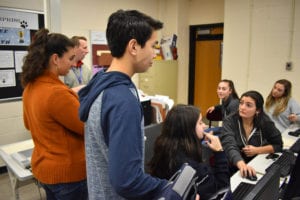
Students on the sales team make real efforts to pitch their products to teachers and students around the high school. Alex Constantis, the president of marketing, made 10 sales alone from Nov. 5 to Nov. 9 to teachers and students he found while wandering the halls.
The next step for Amplify Audio is finishing out its business plan by Dec. 12. Every member of Amplify Audio staff has to pitch in at least three pages of a 60-page report, though this is just the start to the company’s adventure.
In October both VE classes traveled to Long Island University Post to participate in the annual Virtual Enterprise competition. Fank said his classes didn’t place, simply because of how new they were compared to other schools that have been working on their businesses for several years. He hopes by January, when the next competition takes place, his classes will make top honors.
“The accountability is the main thing I tell them about,” Fank said. “We don’t have any kids who come in here and sit on their phones. They know they have to do work because it’s part of that team-oriented feel that we have, and it really guides them to want to do well.”

